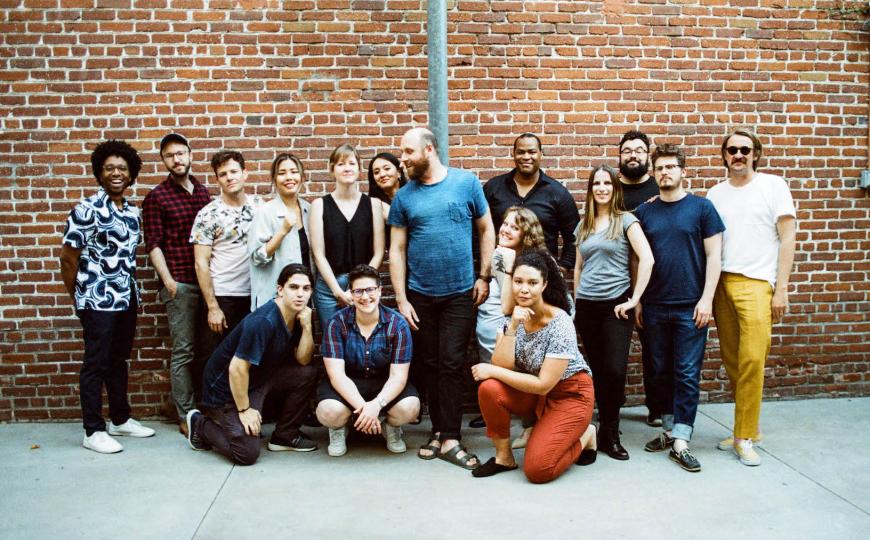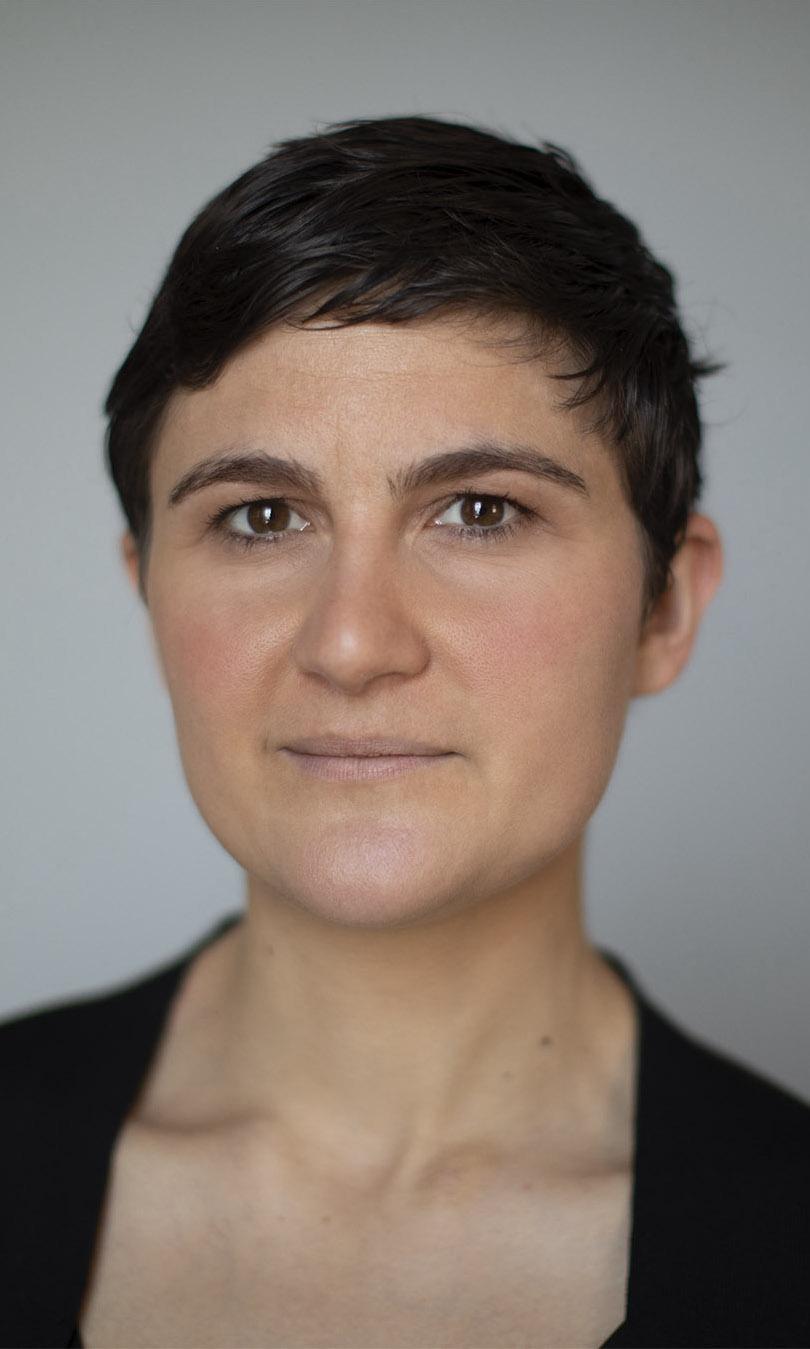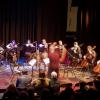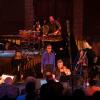
Music fusing classical instruments with field recordings of rain from the islands of Hawaii. The all-enveloping tintinnabulation of bells echoing beneath the trees. A tempest of swirling compositions based on atmospherically inspired scribbles.
These works, along with others by Leilehua Lanzilotti and inti figgis-vizueta, were the climax of the third iteration of Darkness Sounding, a festival of atmospheric compositions presented by Wild Up since 2019. The setting for this year’s offerings, in collaboration with the meditative outdoor performance series floating, was Coldwater Canyon Park, the eco-reserve operated by TreePeople that overlooks the San Fernando Valley.
The goal of floating’s concerts, the organization says, is to “nourish symbiotic relationships among kindred artists, environmental organizations, and unique land projects with the goal of inspiring deeper interdependence among our local communities, cultures, and environments.”
Unlike composers who use notational complexity to evoke nature, some musicians, particularly those with non-Western backgrounds, draw inspiration directly from nature to create music that strives to promote a state of inner peace and meditative wellness.

Leilehua Lanzilotti is Kanaka Maoli (Native Hawaiian), and her island identity plays an important role in her music — from celebrating the revitalization of her native language to the verdant “living land archeology” she says inspires her.
Her opening composition, Sky Gate, began with a Pan-like call from the flute that was answered, embellished, and layered by members of Wild Up, who performed as the centerpiece of both of Sunday’s concerts: Adrianne Pope (violin), Mona Tian (violin), Rachel Iba (viola), Derek Stein (cello), Erin McKibben (flute), Brian Walsh (clarinet), Ryan Darke (trumpet), Marta Tiesenga (saxophone), Patrick Shiroishi (saxophone) and Odeya Nini (voice).
Also a skilled violinist, Lanzilotti began koʻu inoa with long sustained iterations of a single note on her instrument, which were gradually mirrored, layered, and phased by members of the ensemble from various points in the amphitheater. Distinctly minimalist in nature, the work incorporates long breathing spaces interspersed with finely textured details, with hints of Morton Feldman. The piece took on the meditative aspect of a sound bath, encouraging the audience to relax and float downstream in an ebbing and flowing current of tantric drift.
This was followed by ahupuaʻa for string quartet, which began with the players using a technique of rapidly brushing their bows vertically across the strings to create feathery tones and overtones. But those feathers gave way to thorns in the form of snapped pizzicato harmonics, followed by a flurry of bouncing col legno attacks.
By far the most atmospheric of Lanzilotti’s compositions was hānau ka ua, with its field recordings of heavy, light, dripping, pouring rain interspersed with bird calls, which drew answering bird calls from the musicians. It’s a piece best appreciated with eyes closed, and as the composer emphasized, it’s meant to evoke distinctly personal rainy memories in each listener.
The final piece, beyond the accident of time, Lanzilotti explained, was inspired by mid-20th century modernist designer Isamu Noguchi’s conceptual drawings for a pair of (never-built) memorial bell towers. The music that followed enveloped the audience in a clanging chorus of custom-forged individually tuned bells.
After Sunset
As the sky turned a vibrant shade of pink and the sun set, the evening concert began. The program featured a series of sequentially performed, sonically overwhelming compositions by inti figgis-vizueta: you are the water, Open Space, Form the Fabric, ensemble forecast, Talamh, and secret music.

The concert, however, began with a performance piece that could have been created by Fluxus in the 1960s. Four individuals sat around a table, each with a pile of drafting paper, onto which they frantically scribbled. Instantly displeased with their creations, they crumpled them up and tossed them on the floor until a tide of white paper engulfed them.
What was this about? It was not to be revealed until after the concert, when I asked Christopher Rountree, Wild Up’s artistic director, to share the score for secret music. He showed me how each musician was presented with a set of four atmospherically inspired scribbles representing clouds, rivers, and so forth. Combined with a set of prescribed chord progressions, they were asked to interpolate the “meaning” of the sketches into their interpretations. Rountree, who had to part a white sea of paper in order to sit on the floor, modulated the performances with a succession of wildly frenetic arm swings, hand flutters, and rising and falling exhortations that produced monster crescendos and peaceful interludes.
Performed with only a slight pause between pieces, this program offered a fascinating contrasting conversation to the music of Lanzilloti. Beginning with the furious virtuosity of you are the water for solo cello, the music progressed as a towering landscape of densely textured instrumental edifices. The music of figgis-vizueta is totally enveloping in the densities of its instrumentation. And there sat Rountree, Prospero-like, with a mile-wide smile, controlling the tempest.




